Описание
Mercedes-Benz W202 Hardcover book (fragment of the text)
The innovative Mercedes-Benz 190 sedan (W201), which became the prototype of the new compact model W202, aroused very keen interest among consumers at one time.
And not only because of the unusual design for the early 1980s, but also because of the excellent price-quality ratio. The W201 family rolled off the assembly line for almost 11 years, and the total circulation of Baby-Benz, as the 190 was popularly called, amounted to 1.88 million cars.
Thus, this model’s success confirmed that the strategy to expand the model range had been correct. Work on the Baby-Benz successor began in October 1986 under the leadership of the company’s chief designer Bruno Sacco.
And two years later, the first full-scale models were made. A year later, French designer Olivier Boulet was given responsibility for the car’s final appearance. In 1989, tests of the first prototypes began, and within a year, the future C-Class gradually acquired its familiar appearance.
The W202’s body began to resemble more the models of older families: the choppy edges of the W201 were replaced by smooth shapes characteristic of the W124. The rear part of the body underwent the greatest changes – the trunk had a low threshold, and original “triangles” replaced the usual rectangular headlights.
An important design change was to transfer the gas tank from the traditional location behind the back of the rear seats to the cavity underneath, in front of the rear axle. This allowed the rear seat to fold down, which also made it possible to put long objects in the interior.
The new generation of the compact family premiered in May 1993. The new car was assigned the internal index W202, and the family’s first compact station wagon, which appeared in May 1996, was designated S202. By analogy with the model’s flagship, called the S-Class, the smallest of the brand’s cars was given the now familiar C-Class designation.
Accordingly, all models used a combination of the letter C (Compact) and a 3-digit numeric index indicating the engine capacity. The letter E was no longer used in the model index, since all gasoline engines had fuel injection. The letter D was replaced by the word Diesel.
The new generation was increased in size in all directions, which increased both driver and passenger comfort. The main advantages of the new C Class were a spacious interior for 5 people and more active and passive safety.
Compared to its predecessor, the W202 family had an expanded list of standard equipment, including a full-size driver’s airbag, built-in side impact protection, ABS, power steering, 5-speed manual transmission, and central locking. At the same time, the company managed to maintain attractive prices, which had hardly changed compared to the W201 family vehicles.
At the time of its debut in 1983, Baby-Benz offered customers a choice of four engines, but for the C-Class in 1993, the powertrain line consisted of 7 modifications at once: three diesel (75-113 hp) and four gasoline (122-193 hp). In addition, in the same year, a sports version of the C36 AMG with inline six and 280 hp was introduced.
The new car was distinguished by an aerodynamic body, lowered suspension, AMG alloy wheels, and all the bells and whistles. The new compact family’s success is evidenced by the fact that the 500,000th C-Class car was produced in February 1995, less than two years after its debut.
The debut of the first C-Class station wagon in 1996 was an important step towards popularizing the model and expanding the customer base. Thanks to the interior’s transformation, the trunk volume could vary from 465 to 1,510 liters.
In June 1997, in the middle of the model’s life cycle, the company undertook a major upgrade and modernization of the C-Class. The car received a fresh exterior and interior, an expanded range of equipment, and improved performance.
The next generation of C-Class W203 sedan was presented in March 2000, and the cars appeared on the market in May. At the same time, the W202 family was discontinued, first at the Sindelfingen factory and then a month later at the Bremen facility.
The success of the first-generation C-Class is evidenced by its circulation in seven years, which reached 1,870,254 vehicles: 1,626,383 sedans and 243,871 station wagons. Interestingly, its predecessor sold about the same amount around the world, but took 11 years to do so.
Read the continuation of Mercedes-Benz W202 story in the book.
Other books about history of Mercedes:


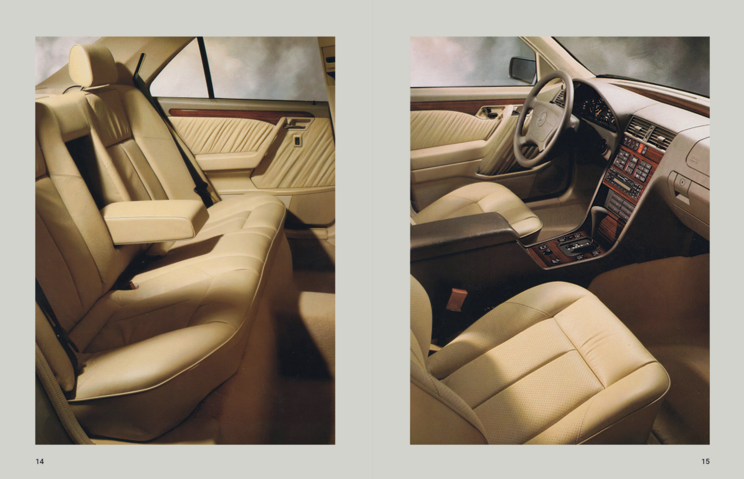
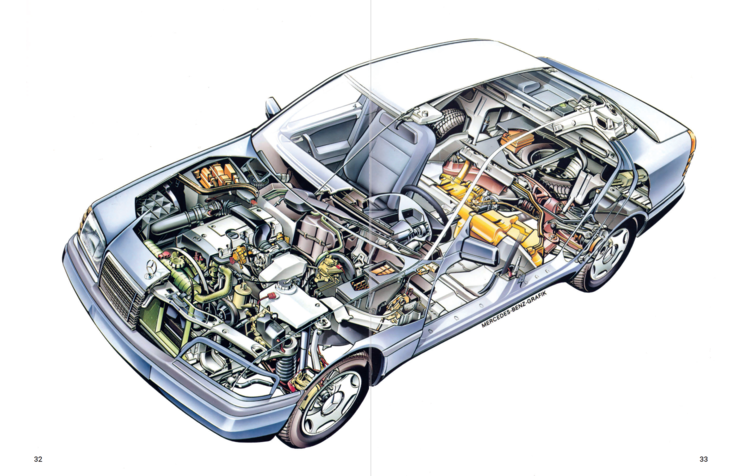
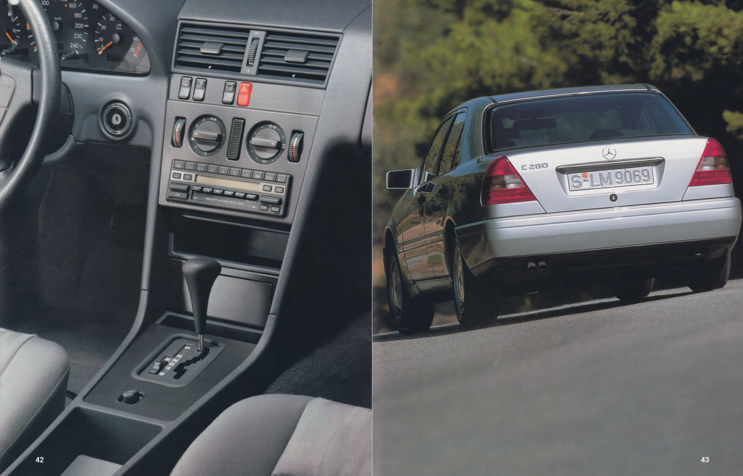

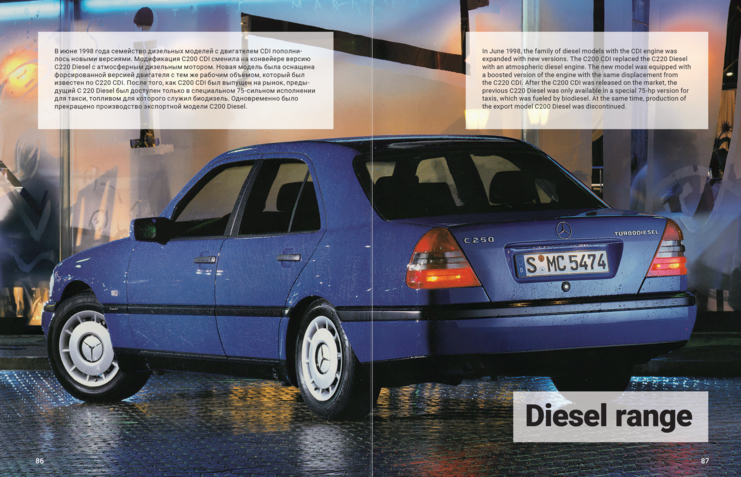

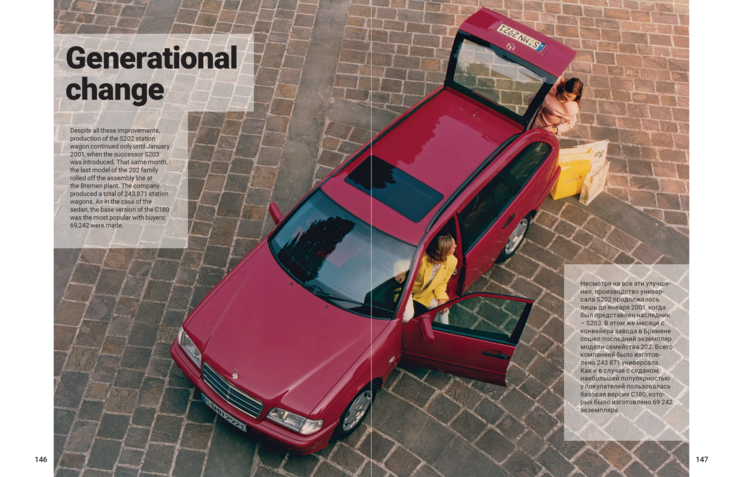
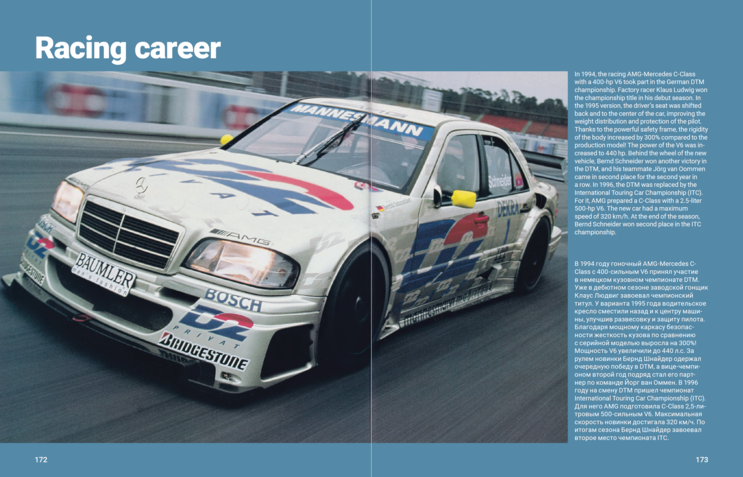

Отзывы
Отзывов пока нет.